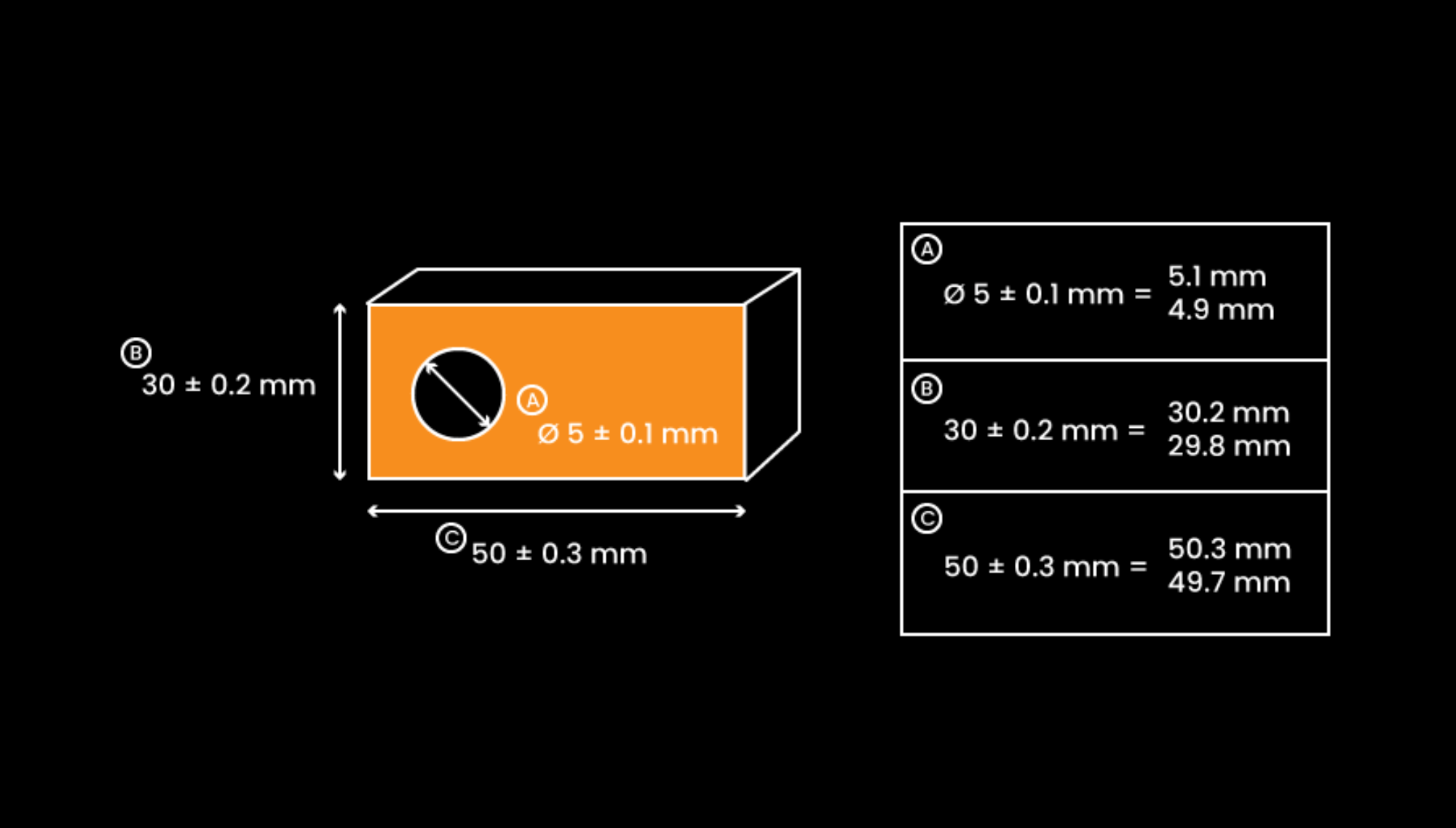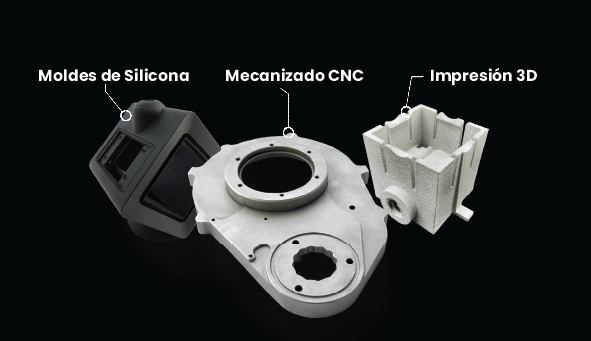The vacuum casting process, also known as polyurethane molding or silicone molding, is a method used for low volume production. It is a process for manufacturing plastic parts in a relatively simple way and without high costs or long lead times, unlike other processes such as steel or aluminum molds.
In this article we explain key factors and elements to take into account during the vacuum casting process in silicone molds.
Silicone mold tolerances
It is important to note that, in vacuum casting, the tolerance depends on the quality of the 3D printed part or CNC machined master.
Typical tolerance of a rigid material is ±0.25mm (0.010in) or ±0.5% above standard.
At Proto&Go! we use these two technologies: CNC machining and 3D printing. We normally opt for CNC machining whenever possible, in order to maintain tighter tolerances. However, not all geometries are suitable for machining technology. Therefore, in such cases, we use a high-resolution 3D printing process (such as Polyjet or SLA).
Wall thickness
Consistent wall thickness is an essential factor in the urethane casting process. Thickness variation can lead to unequal cooling and curing rates, which may result in deformities or weak spots in the part.
The size that works best with urethane castings are walls between 1.5 and 4 millimeters. In addition, although it is not a requirement, it is advisable to maintain a uniform wall thickness.
On the other hand, it is important to note that thinner sections (less than 1 millimeter thick) run the risk of not filling completely.
Another essential factor is the size of the piece, since the larger it is, the larger the wall must also be to ensure adequate support.
Finally, the optimum thickness may depend on the specific project and the material selected, two factors that must always be taken into account.
Materials and finishes
This process is ideal for many different types of polyurethane plastics, from rigid to flexible. In Proto&Go! you can find the following:
- Rigid Polyurethane: it is a porous material with a closed cellular structure. It stands out for its great power as a thermal insulator, it is very light and easy to handle.
- Flexible Polyurethane: it is the result of a mixture of polyol and isocyanate. Its applications are very diverse and it is used in numerous industrial processes. It stands out for its resistance to the impact of chemical solvents and for its flexibility.
- Transparent Rigid Polyurethane
- Transparent Flexible Polyurethane
With regard to the finishes, we can highlight the following two:
- Painting: is a surface finish that is applied to different materials so that the piece is the desired color (either RAL or Pantone).
- Pigmented: it is a finish applied to polyurethane cast in silicone molds to give mass color to the complete piece.
Vacuum casting in silicone molds at Proto&Go!
In short, vacuum casting in silicone molds is an ideal process for the fast and economical manufacture of polyurethane parts, although it also has some limitations. Therefore, it is essential to take into account all the characteristics of this technology and materials in order to choose those that best suit the needs of the project.
AtProto&Go! we offer the best silicone molding services to obtain your prototypes and parts.





